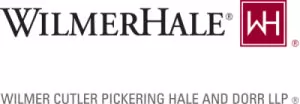- within International Law topic(s)
- in United States
- within Environment topic(s)
On July 31, 2025, President Trump issued an executive order detailing new reciprocal tariff rates for individual countries and stating they will take effect at 12:01 a.m. EST seven days from the date of the order (i.e., August 7, 2025).
The new reciprocal tariff rates, listed in Annex I to the Order, range between 10 and 41 percent, with imports from Laos, Myanmar (Burma), Switzerland, and Syria receiving the highest rates (40%, 40%, 39%, and 41%, respectively). Any country not listed in Annex I will be subject to a 10 percent baseline reciprocal tariff except for Canada, Mexico, North Korea, Russia, and Belarus, which are excluded from the 10 percent baseline tariff. The reciprocal tariffs are to be applied in addition to the general duty rate in Column 1 of the U.S. Harmonized Tariff Schedule (referred to as the most-favored nation, or "MFN," rate), with the exception of goods from the European Union.
The European Union is the only U.S. trading partner that does not have a flat rate. For goods from the EU with a Column 1 duty rate of less than 15 percent, the total tariff under the reciprocal tariff regime will be 15 percent. For example, any goods from the EU with a Column 1 duty rate of 3% will be subject to a 15% tariff (not an 18% tariff). For any goods from the EU with a Column 1 duty rate that is already at least 15 percent, the total tariff will be the Column 1 duty rate (in other words, there will be no additional reciprocal tariff).
While the Order indicates that the new tariffs will go into effect at 12:01 a.m. EST on August 7, there is an exception for goods coming from Annex I countries that are loaded onto a vessel and in transit on their final mode of transit before the tariffs take effect. If such goods are imported for consumption (or withdrawn from a warehouse for consumption) before 12:01 a.m. EST on October 5, they will not be subject to the new tariffs. Imports from countries not listed in Annex I are not subject to the same exception; reciprocal tariffs will apply to goods from these countries that arrive in the United States on or after August 7th regardless of when the goods were shipped.
As WilmerHale explained previously, President Trump originally announced on April 2, 2025, a 10% baseline reciprocal tariff on imports from nearly all U.S. trading partners that became effective on April 5, with additional reciprocal tariffs for 57 countries that were scheduled to take effect on April 9. As WilmerHale also explained in a subsequent alert, President Trump later suspended the country-specific reciprocal tariffs for a period of 90 days (until July 8), leaving most countries subject only to the 10% baseline tariff. On July 7, President Trump extended this suspension period until July 31.
The revised rates for certain countries reflect discussions the Administration had with various countries during the suspension period. With respect to the reciprocal tariffs, as of August 3, 2025, the Administration has announced deals with the following U.S. trading partners: the European Union, Indonesia, Japan, Philippines, South Korea, United Kingdom, and Vietnam. The deals generally appear to constitute frameworks for further negotiations, but the reciprocal tariff rates in Annex I are consistent with the rates that the United States has announced as part of these deals.
The new executive order also includes a section regarding transshipment, stating that any article CBP determines has been transshipped to evade the reciprocal tariffs shall be subject to an additional duty of 40 percent instead of the reciprocal tariff that would normally apply.
China, Canada, and Mexico are not included in Annex I. Imports from these countries are subject to additional tariffs under separate executive orders, and officials from those countries have been engaged in negotiations with the Administration regarding their tariff rates. On July 31, the United States and Mexico agreed to extend their negotiations for 90 days. After escalating rounds of increased tariffs in April, the United States and China agreed to a temporary truce in hopes of reaching a deal; that truce is currently set to expire on August 12, and President Trump is reportedly considering another 90-day extension. Although Canada had been engaged in trade discussions with the United States, the two sides have thus far failed to reach an agreement, and the United States announced an increase in Canada's tariff rate from 25% to 35% effective August 1, 2025.
In addition to country-specific tariffs, WilmerHale is continuing to monitor the ongoing Section 232 investigations related to imports in certain sectors. As a result of Section 232 investigations that have already been completed, imports of steel and aluminum are currently subject to tariffs of 50%, imports of autos and auto parts are subject to tariffs of 25%, and the Administration also recently announced that 50% tariffs will apply to imports of semi-refined copper and intensive copper derivative products. Ongoing Section 232 investigations concern imports of semiconductors, timber and lumber, pharmaceuticals, processed critical minerals, trucks, commercial aircraft and jet engines, unmanned aircraft systems, and polysilicon.
Reciprocal Tariffs Comparison Table
| Countries/Territories | Total Reciprocal Tariff Rates Announced on 7/31/25 | Difference with Reciprocal Tariff Rates Announced on 4/2/25 |
|---|---|---|
| Afghanistan* | 15% | +5% |
| Algeria | 30% | 0% |
| Angola | 15% | -17% |
| Bangladesh | 20% | -17% |
| Bolivia* | 15% | +5% |
| Bosnia and Herzegovina | 30% | -5% |
| Botswana | 15% | -22% |
| Brazil* | 10%** | 0% |
| Brunei | 25% | +1% |
| Cambodia | 19% | -30% |
| Cameroon | 15% | +4% |
| Chad | 15% | +2% |
| Costa Rica* | 15% | +5% |
| Côte d`Ivoire | 15% | -6% |
| Democratic Republic of the Congo | 15% | +4% |
| Ecuador* | 15% | +5% |
| Equatorial Guinea | 15% | +2% |
| European Union | (a) for a good with a Column 1 duty rate less than 15%: 15% (inclusive of the Column 1 duty rate) | (b) for a good with a Column 1 duty rate exceeding 15%: the Column 1 duty rate |
| Falkland Islands | 10% | -31% |
| Fiji | 15% | -17% |
| Ghana* | 15% | +5% |
| Guyana | 15% | -23% |
| Iceland* | 15% | +5% |
| India | 25% | -1% |
| Indonesia | 19% | -13% |
| Iraq | 35% | -4% |
| Israel | 15% | -2% |
| Japan | 15% | -9% |
| Jordan | 15% | -5% |
| Kazakhstan | 25% | -2% |
| Laos | 40% | -8% |
| Lesotho | 15% | -35% |
| Libya | 30% | -1% |
| Liechtenstein | 15% | -22% |
| Madagascar | 15% | -32% |
| Malawi | 15% | -2% |
| Malaysia | 19% | -5% |
| Mauritius | 15% | -25% |
| Moldova | 25% | -6% |
| Mozambique | 15% | -1% |
| Myanmar (Burma) | 40% | -4% |
| Namibia | 15% | -6% |
| Nauru | 15% | -15% |
| New Zealand* | 15% | +5% |
| Nicaragua | 18% | 0% |
| Nigeria | 15% | +1% |
| North Macedonia | 15% | -18% |
| Norway | 15% | 0% |
| Pakistan | 19% | -10% |
| Papua New Guinea* | 15% | +5% |
| Philippines | 19% | +2% |
| Serbia | 35% | -2% |
| South Africa | 30% | 0% |
| South Korea | 15% | -10% |
| Sri Lanka | 20% | -24% |
| Switzerland | 39% | +8% |
| Syria | 41% | 0% |
| Taiwan | 20% | -12% |
| Thailand | 19% | -17% |
| Trinidad and Tobago* | 15% | +5% |
| Tunisia | 25% | -3% |
| Turkey* | 15% | +5% |
| Uganda* | 15% | +5% |
| United Kingdom* | 10% | +0% |
| Vanuatu | 15% | -7% |
| Venezuela | 15% | 0% |
| Vietnam | 20% | -26% |
| Zambia | 15% | -2% |
| Zimbabwe | 15% | -3% |
* These countries were not subject to country-specific reciprocal tariffs beyond the 10% baselines under the 4/2/25 Reciprocal Tariffs Executive Order.
** As of August 6, 2025, Brazil will be subject to an additional 40% tariff rate.
While the new Executive Order provides a degree of certainty regarding U.S. tariff rates, the status of countries that have not struck deals with the Administration continues to be fluid as do the terms of the deals with those countries that have reached an agreement. WilmerHale is closely monitoring developments with respect to the reciprocal tariff regime—as well as other tariffs the Trump Administration has signaled may be coming on products such as pharmaceuticals and semiconductors—and is prepared to advise clients on how to navigate and mitigate the effects of these tariffs.
The content of this article is intended to provide a general guide to the subject matter. Specialist advice should be sought about your specific circumstances.








